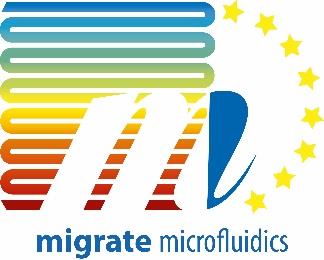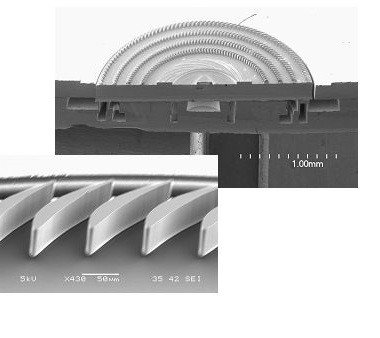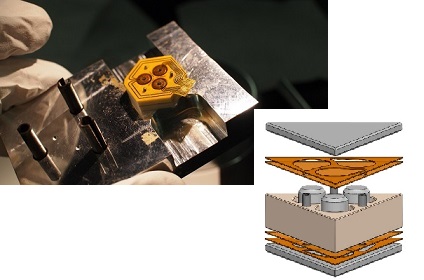|
|
|
Workshop > Workshop Keynote LecturesKeynote Lecturers You can download a short presentation of the Keynote Lecturers: Presentation_Keynote_Lecturers.pdf
Keynote Lectures abstracts
Development of a Cold-Atom Vacuum Standard (CAVS) James A. Fedchak National Institute of Standards and Technology (NIST),Gaithersburg, USA NIST is embarking on a program to create a cold-atom vacuum standard (CAVS), that will be both a primary standard and absolute sensor of vacuum for pressures below 10-5 Pa, covering the entire ultra-high vacuum range (UHV), and into the extreme-high vacuum (XHV) range (<10-10 Pa). To date, there are no primary standards in this pressure regime, even though UHV is critical to advanced research and manufacturing. The CAVS is based on the loss-rate of ultra-cold sensor atoms (< 1 mK) from a shallow magnetic trap (E/kB< 1 mK). Collisions between the trapped sensor atoms and the ambient (300 K) background gas in the vacuum result in atom loss from the trap. The loss-rate is thus related to background density in the vacuum and the loss-rate coefficient, or collision cross section, between the background gas and sensor atom. The loss-rate coefficient is a fundamental atomic property and can be determined theoretically from ab initio quantum calculations for the Li + H2 system. This calculation is presently underway at NIST. Experimentally, we are studying all other sources of atom loss that can possibly contribute to the loss rate, and we are determining collision cross sections and relative sensitivity factors so that the CAVS can be used with many species of gas. An important part of this project is to develop a portable, chip scale version of the CAVS. Once this deployable technology is developed, we anticipate that other practical metrology tools based on cold atoms will follow. This presentation will cover the physics of the CAVS and the most recent results. Time permitting, we will also have some discussion of another NIST effort to determine the gas absorption and outgassing properties of novel 3D-printed materials for gas storage and sensing.
Microfabricated gas pumps for micro gas chromatography and other applications Yogesh B. Gianchandani University of Michigan, Ann Arbor, USA This presentation will first review the trajectory of our efforts in developing lithographically microfabricated Knudsen pumps over the past two decades. These efforts have resulted in a spectrum of chip-scale Knudsen pumps. At one end of the spectrum is a 162-stage pump of 12x15 mm2 silicon footprint; this pump achieved a compression ratio from 760 Torr to 0.9 Torr. At the other end of the spectrum are silicon micropumps achieving 1-200 ml/min flow rate near atmospheric pressure. The presentation will then focus on application specific needs in the context of chemical sensing. Volatile organic compounds (VOCs) such as benzene, toluene, and xylene are common pollutants found in fugitive emissions from industrial processing; from refinement, distribution, and combustion of petroleum and oil; and from printing and painting. Elevated and enduring exposure to such VOCs can result in central nervous system dysfunction, respiratory and cardiovascular diseases, and cancer, and consequently there is a need for low cost equipment to monitor and regulate such emissions. The presentation will review some of our recent efforts to develop Knudsen pumps that can be incorporated into micro-gas chromatographs intended for identifying and quantifying VOCs. It will review architectural options and performance targets that should be considered when developing Knudsen pumps for this application, and the kind of VOC sensing that can be achieved when such pumps are used. This research is performed in the context of the University of Michigan Center for Wireless Integrated MicroSensing and Systems (WIMS2). The Center brings together research in multiple specialties to facilitate microsystems for healthcare and environmental monitoring.
Micro heat engines for waste heat harvesting Luc G. Fréchette Université de Sherbrooke, Canada Microelectromechanical system (MEMS) technologies enable the fabrication of heat engines at the microscale for distributed power generation and waste heat recovery. Power-plants-on-a-chip, such as micro steam turbines and other novel concepts to convert heat into electricity at small scale have therefore been developed over the past decade, raising non-traditional challenges in fluid mechanics and heat transfer. These can be used to power wireless sensors from distributed heat sources or improve the efficiency of energy systems by harvesting waste heat. This presentation will first describe micro heat engines, including micro-turbomachinery-based steam engines and piston engines that implement traditional thermodynamic cycles (Rankine, Stirling) as well as novel heat engine approaches enabled by microscale phenomena. The thermofluidic challenges that arise when miniaturizing these machines will be highlighted, including low Reynolds number microturbomachinery flows, high frequency oscillating gas flows, conjugate heat transfer, and dynamic phase change behavior in microchannels. |




